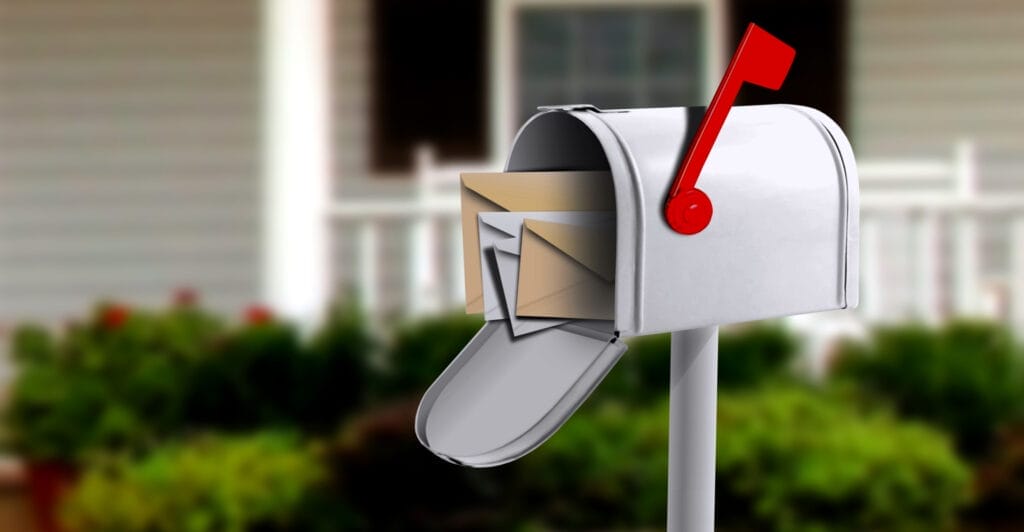Does your business send out a lot of emails at once? It could be for newsletters or marketing emails. Google and Yahoo are making some important changes in 2024 that will affect you.
One of the big things they’re focusing on is email authentication, which is all about making sure that the emails you send are really coming from you and not from someone pretending to be you. This is really important because there are a lot of bad actors out there who use email spoofing (hijacking your email) to trick people into opening phishing and spam emails. It’s when you get an email that looks like it’s from someone you know, but it’s actually from a scammer trying to trick you. That’s why it’s crucial to set up DMARC to protect your email deliverability and reputation.
If you send out bulk email using services like Mailchimp, MailerLite and Moosend or from website platforms like WordPress, Wix, Squarespace and Webflow, or even transactional emails from e-commerce platforms like Shopify and Woocommerce you need to take action to ensure people continue to receive your emails.
Google and Yahoo are making DMARC mandatory
The changes set to be implemented on 1 February, 2024 by Gmail and Yahoo will make DMARC authentication mandatory for anyone sending bulk emails – and by bulk, we mean more than 5,000 emails in a day. Without DMARC, your emails could be more susceptible to being marked as spam or, worse, not reaching your recipients at all. Imagine spending hours crafting the perfect email campaign only to have it end up in the dreaded spam folder.
While Google and Yahoo’s changes are targeted at bulk email senders, implementing DMARC stills offers benefits for everyone sending any volume of email. Read on to understand how DMARC works and what you need to do, to implement it for your business.
In this article we are talking about personalised email addresses that use your web domain eg. [email protected], not public email addresses such as @gmail, @yahoo, or @outlook.
What DMARC is and Why Your Emails Will Get Lost Without It
When you send emails, you want them to actually get to the people you’re sending them to, right? Well, DMARC is like a superhero that protects your emails from bad guys who try to use your email address for sneaky stuff (like spoofing or phishing). It helps build trust with the folks you’re emailing, makes sure your emails actually get delivered, and keeps you in the good books with email providers. So, setting up DMARC is like putting a shield around your emails to keep them safe and make sure they reach their destination.
The important benefits of implementing a DMARC policy include:
1. Improved Email Deliverability: DMARC helps ensure that your legitimate emails are delivered to recipients’ inboxes and not marked as spam or rejected by email providers.
2. Protection Against Email Spoofing: DMARC helps prevent malicious actors from impersonating your domain and sending fraudulent emails on your behalf, thereby protecting your brand reputation and the security of your recipients.
3. Enhanced Domain Reputation: By implementing DMARC, you can improve the reputation of your domain, which in turn can positively impact the deliverability of your emails and build trust with recipients.
4. Visibility and Reporting: DMARC provides detailed reports on email authentication failures, allowing you to gain insights into unauthorised use of your domain and take appropriate actions to mitigate risks.
5. Compliance with Email Providers’ Policies: With Yahoo and Gmail’s upcoming changes, implementing DMARC will become crucial for complying with email providers’ authentication requirements and maintaining a high sender reputation.
Overall, implementing a DMARC policy is essential for safeguarding your email communications, maintaining trust with recipients, and ensuring the successful delivery of your email campaigns.
Note: To comply with Google’s changes for bulk emails you also need to make sure people actually want to receive your emails (don’t spam people) and you need to include easy unsubscribe links in your emails.
Conclusion
Understanding the significance of DMARC and adhering to its best practices is essential for maintaining a strong domain reputation and ensuring that your bulk emails reach their intended audience, particularly in light of the upcoming changes to Gmail and Yahoo’s email handling policies. By implementing DMARC, you can bolster your email deliverability and protect your domain from unauthorised use.
Setting up DMARC is a little complex and to be honest it can be a bit overwhelming when you aren’t familiar with the process. You need to get it right or you can accidentally block emails you want to send! If you need help implementing DMARC for your business Digital Voice is here to help.
We can set up DMARC for your business to ensure you have a stress-free, successful implementation. Contact us for a free, no-obligation DMARC audit to get you started.
